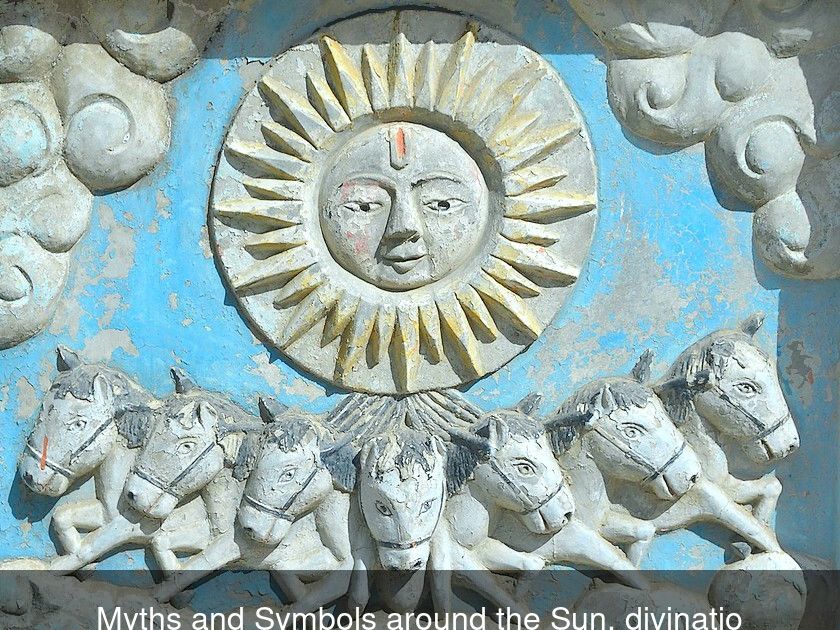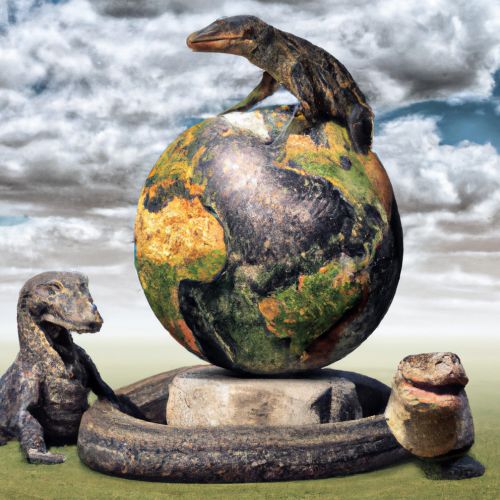Myths And Symbols Around The Sun.
Source of life bringing light and warmth to our planet, the Sun has inspired many myths and legends. The solar star was worshipped as a god in many cultures, both among the Egyptians and the Celts. We offer you an overview of the myths and symbols surrounding the sun.
A universal symbol
The solar orb has always fascinated men, as evidenced by the numerous symbols found by archaeologists.
In the oldest civilizations, the sun is represented by a circle with a dot in its center, a circular symbol that also evokes the sun's journey from sunrise to sunset. This symbol has been adopted in astronomy, astrology, and alchemy.
In pagan myths, it is also represented as a wheel with a cross in its center representing the four seasons.
It is in ancient Greece that more stylized representations appear, in the form of a yellow disk adorned with triangular rays. This symbol is the ancestor of our current representation of the sun with its rays.
Among the Celts, the famous triskel symbol is said to have originated as a representation of the solar god Bélénos. Archaeologists have found different sun-related structures on Celtic lands, which only allow its rays to enter once a year, during the winter or summer solstice.
In the Middle Ages, the solar orb is represented with a face on the shields of warriors. This same symbol will be adopted under the reign of Louis XIV to embody the power of the Sun King.
A power that is sometimes masculine or feminine.
In many cultures, the sun is considered a masculine element. In Taoism, for example, the sun embodies the Masculine principle opposed to the moon, the feminine principle. The two oppose and complement each other like yin and yang.
Although the Sun is generally considered masculine, there are exceptions to the rule. In Shinto myths, our star is a great goddess called Amaterasu. She is the sister of Tsukuyomi, the god of the Moon.
In Norse mythology, the children of Mundilfari and Glaur are named Sól, the goddess of the sun, and Máni, the god of the moon.
A god for many peoples.
In many myths, the Sun is embodied by a god. This god can be the guardian of time like Utu among the Babylonians or the defender of justice like Shamash among the Sumerians.
Whatever properties are attributed to it, the Sun always occupies a central place among the deities. Among the Aztecs, Huitzilopochtli is both the god of the sun and war and the master of the world.
Among the Romans, Apollo is the god of music and singing, of masculine beauty and solar light. Among the Celts too, the god Belenus symbolizes harmony and beauty.
In Hinduism, the sun god called Surya is the eye of the sky that watches over the world. In Indian iconography, he is represented as a young man with a halo of the solar disc on a chariot of light pulled by seven horses (which represent the seven days of the week).
But it is especially the Egyptians who elevated the Sun to the rank of the most powerful god of all and creator of the universe.
The most powerful of the Egyptian gods
In Egyptian mythology, the solar deity takes on three different forms:
• Khépri the scarab represents the rising sun
• Rê or Râ symbolizes the solar disk, the midday sun
• Atoum, an old man leaning on a staff, embodies the setting sun.
According to Egyptian legend, every evening the goddess of the sky, Nout, swallows Rê and carries him in a celestial boat.
During this perilous nocturnal journey, the sun god is attacked by the forces of darkness and, in the hours before dawn, he engages in a merciless battle with the giant serpent Apophis, who embodies these darkness. The solar god cuts off the serpent's head before being reborn.
This daily cycle of death and rebirth symbolizes human life and the Egyptians' hope for resurrection after death.



